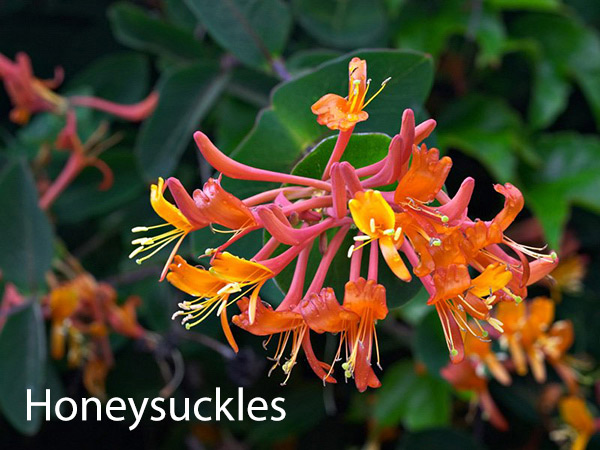The Fragrant Woodbine
Gardeners associate the name honeysuckle, or lonicera, with our scented native plant, Lonicera periclymenum, also known as woodbine. The flowers are usually a mixture of reddish pink and butter yellow, and the stems climb up so this deciduous twiner is perfect rambling over a low stone wall, or scrambling through a large shrub or hedge. It can also be trained onto a large obelisk, up a fence, or over a tree stump. The roots prefer to be moist and shaded, but the plant likes to scramble into sun, so they take up little ground room and are good planted in a corner, or on the shadier side of a wall.

The flowers are particularly well scented in the evening and early in the morning because their long trumpets are designed to be moth-pollinated, although that does not stop bumblebees from biting through the tube to get at the sweet nectar. Red berries, which are adored by thrushes and blackbirds, follow but usually get gobbled up in the autumn. If they last into winter you may be lucky enough to see a waxwing.
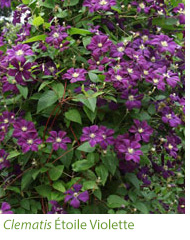 There are two similar pink and yellow forms, ‘Belgica’ and ‘Serotina’, and they flower at slightly different times, so it’s an excellent idea to plant both nearby if there’s room. The early Dutch honeysuckle, ‘Belgica’, has purplish-red and pale yellow flowers and these appear in June and July. The late Dutch honeysuckle, ‘Serotina’, produces purple-red flowers with pinkish yellow yellow inside and the flowers are arranged very neatly. It’s an AGM plant because the fuller heads of flower can appear from June until October. This colour concoction goes well with larger shrub roses including the buff-apricot hybrid musk ‘Buff Beauty’, or a pick a climbing rose such as the soft pink ‘New Dawn’. Or you could add a purple-blue viticella clematis, such as 'Etoile Violette’ for contrasting late-summer flower. There are two similar pink and yellow forms, ‘Belgica’ and ‘Serotina’, and they flower at slightly different times, so it’s an excellent idea to plant both nearby if there’s room. The early Dutch honeysuckle, ‘Belgica’, has purplish-red and pale yellow flowers and these appear in June and July. The late Dutch honeysuckle, ‘Serotina’, produces purple-red flowers with pinkish yellow yellow inside and the flowers are arranged very neatly. It’s an AGM plant because the fuller heads of flower can appear from June until October. This colour concoction goes well with larger shrub roses including the buff-apricot hybrid musk ‘Buff Beauty’, or a pick a climbing rose such as the soft pink ‘New Dawn’. Or you could add a purple-blue viticella clematis, such as 'Etoile Violette’ for contrasting late-summer flower.
Woodbine, a British native, is found in hedgerows and plantsman Graham Stuart Thomas discovered a completely custard-yellow form on a narrow lane a few miles north of Warwick and it’s named after him. The foliage of L. periclymenum ‘Graham Thomas’ is greyer and it flowers in July, but as the flowers fade they turn to cream-white. Like all forms of woodbine, this needs shade at the roots and an opportunity to scramble into sun.

If you want a smaller woodbine that still climbs, opt for the recently introduced ‘Rhubarb and Custard’ instead as this can easily be trained onto a tripod. There’s also a shrubby form that’s perfect in a patio pot called ‘Strawberries and Cream’, and it’s highly scented.
Twining forms of Lonicera periclymenum can also take two to three years to become established. After that they can be tidied back in early spring, if needed, by light pruning. They flower on the ends of the long stems, so they are not suitable for formal training. They are best left to billow outwards and form a mound of flower, a reminder of an English country lane.
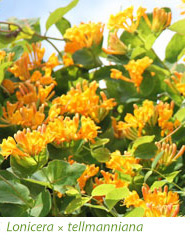 Orange flowered and deeper yellow honeysuckles have brighter coloured flowers, but they lack fragrance because they’re often hummingbird pollinated in the wild. Lonicera × tellmanniana (AGM) has oval green leaves and the upper pairs join together to form cup shaped discs that frame the bright yellow tubular flowers which appear in May and June. This hybrid between an American species (L. sempervirens) and the Chinese L. tragophylla is a vigorous plant, as hybrids often are, but it needs shade at the root and it enjoys summer moisture. It will sulk in dry spots. Orange flowered and deeper yellow honeysuckles have brighter coloured flowers, but they lack fragrance because they’re often hummingbird pollinated in the wild. Lonicera × tellmanniana (AGM) has oval green leaves and the upper pairs join together to form cup shaped discs that frame the bright yellow tubular flowers which appear in May and June. This hybrid between an American species (L. sempervirens) and the Chinese L. tragophylla is a vigorous plant, as hybrids often are, but it needs shade at the root and it enjoys summer moisture. It will sulk in dry spots.
Lonicera × brownii 'Dropmore Scarlet’ is an excellent selection of the scarlet trumpet honeysuckle, a complex hybrid with a long flowering season that lasts from late-summer into autumn. The soft green leaves that are close to the flowers, fuse together to form a rounded shape and this sets the flower off really well. It needs a warm site to do well and it can be prone to aphid attack. Rub the aphids away with your fingers.

‘Mandarin’ (AGM) is a new honeysuckle which has Lonicera × brownii in its parentage. It combines young, purple-tinted foliage, heavily veined in pink, but this becomes green as the citrus-coloured flowers appear in shades of blood-orange and pink. It’s Canadian bred, so very hardy, and the colourful, sterile flowers have a light fragrance in hot weather. It will climb faster with the aid of wires or supports, and this spectacular honeysuckle’s already been given an AGM by the RHS.
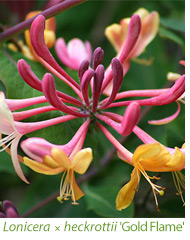 Lonicera × heckrottii 'Gold Flame’ (AGM) is highly fragrant, despite being a hybrid between two American species. It’s more of a shrub than a climber, so you’ll need wires to wall train it, but it’s very handsome. It prefers dappled shade and it tends to be slow-growing. Lonicera × heckrottii 'Gold Flame’ (AGM) is highly fragrant, despite being a hybrid between two American species. It’s more of a shrub than a climber, so you’ll need wires to wall train it, but it’s very handsome. It prefers dappled shade and it tends to be slow-growing.
Some honeysuckles are grown for their handsome evergreen foliage and Augustine Henry’s Chinese honeysuckle, Lonicera henryi, is superb in winter. The long narrow leaves look great cascading down the far side of a wall on long trailing stems. The new foliage has dark purple overtones and the small flowers are normally yellow, although this is Chinese honeysuckle is primarily grown for its sumptuous evergreen foliage. ‘Copper Beauty’ is a selection with very dark, coppery new foliage. Augustine Henry has many plants with good foliage associated with his name, including Clematis ‘Henryi' and Parthenocissus henryana -the latter is a Chinese type of Virginia creeper.
Another evergreen honeysuckle hails from Japan, hence the Lonicera japonica. It’s a rampant climber, so generally used to cover a shed, or a bare tree, but the highly scented flowers appear from April until August. ‘Halliana’ is a named selection and ‘Hall’s Prolific’, which has been given an AGM, is a free-flowering vigorous form that will cover a large area.
And For Winter
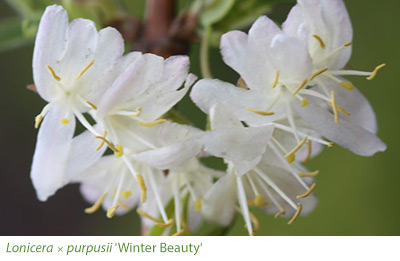
Winter-flowering honeysuckles are highly fragrant shrubs and flowers can appear in mild winters by early as Christmas on bare branches. By March the flowers are accompanied by fresh green foliage that’s just emerging. These early nectar plants are really useful for wildlife, both for honeybees, solitary bees and bumblebees. The best form is a hybrid, Lonicera × purpusii 'Winter Beauty’, because this forms a medium-sized shrub with plenty of fragrant flowers. Stems can be picked for the house and last well in water.
|
Things to do
 |
Keep weeding
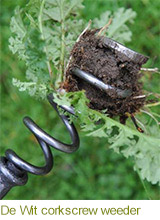
It’s very therapeutic, so tackle your weeds now, preferably in a solitary state that allows the mind to ramble. As Christopher Lloyd said “it leaves their minds free to develop the plot for their next novel, or to perfect the brilliant repartee with which they should have encountered a relative's latest example of unreasonableness.” Enough said!
|
 |
Prepare the soil
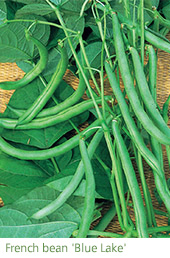
Get the ground ready for tender plants such as courgettes, French beans and runner beans. If you haven’t sown them yet there’s still plenty of time left.
|
 |
Keep them cozy

Watch out for late frosts and protect susceptible plants, such as dahlias, bedding plants and potatoes, with horticultural fleece. Ideally these should not go outside until the end of the month.
|
 |
Water

Watering seeds and potted plants needs to be done carefully, preferably in the morning when the soil is cooler so that transpiration is less likely. A really good watering can is a blessing and the 5L Haws watering can is ideal for seedlings and plants.
|
 |
Do some pruning
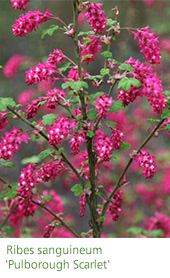
Prune spring-flowering shrubs, such as forsythia and flowering currant Ribes), and remove one third of the flowering wood. You can also Chelsea chop certain plants, by removing the top third of growth to delay flowering times. These include hardy English lavender, heleniums, border phloxes, campanulas and sedums.
|
|
|
Essential Kit for May
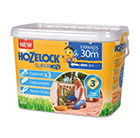
Hozelock superhoze expanding hose set
£56.99
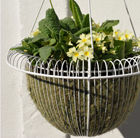
Deep hanging basket
£29.99 £14.99

Rootgrow - licensed by the Royal Horticultural Society
£9.99

Vitax Q4 fertiliser
£11.99
|
|



